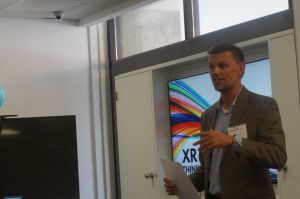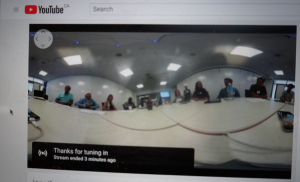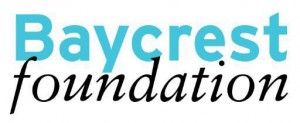VR and XR. Do these acronyms mean anything to you? They may seem like gibberish right now. However, thought leaders in many industries – including healthcare – are starting to embrace virtual reality (VR) and extended reality (XR) to offer unique experiences for patients, caregivers and even healthcare providers.
Using XR to offer new experiences
Baycrest manager of training and simulation Lisa Sokoloff, whose VR Dementia Simulation was funded by CABHI, is one such example. Imagine being able to virtually transport a caregiver into a senior’s body. With the help of virtual reality, users will be able to experience some hallmarks of aging: vision loss, postural changes, reduced hearing and memory issues, among other things. The goal is to help build empathy for people experiencing the effects of aging and dementia.
This project was inspired by the Frail Aging Suit, a physical suit that users can put on to experience first-hand what it can be like to age. “We had written some scenarios to help people recognize the memory loss or the language challenges that happen when older adults experience dementia,” shares Sokoloff. “And then we thought, ‘Wouldn’t it be great if we could do that in a way that was kind of fun and new, but also scalable? Currently, in order to use the suit, which is very expensive, people have to come here.’”
Sokoloff was aware that a handful of other CABHI projects – including ones from the University Health Network’s OpenLab and VHA Home HealthCare – featured an XR element. The latter is simply a term used to describe all real and virtual-combined environments (even a 3D video game can be considered XR). All of the project leads had already been exchanging ideas for a while when they decided: why not add more people into the mix?

Dr. Cameron Norman facilitated the XR Think Tank.
The purpose of the XR Think Tank
That’s how CABHI’s XR Think Tank event – held on Aug. 30, 2017 in collaboration with the Baycrest Centre for Education and the Baycrest Centre for Learning, Research & Innovation in LTC – came about. The gathering brought together an interdisciplinary group with various backgrounds – ranging from an anesthesiologist using XR to decrease anxiety in patients, to post-secondary educators using virtual reality to train their students, media professionals, industry partners, along with seniors and front-line caregivers. All of these people shared one common interest: the use of XR in healthcare.
Ron Beleno, a caregiver, says that at first he was cautious about the use of virtual reality with people experiencing dementia. “I was actually for the past few years hesitant about it. But CABHI had an event about two months ago, an Innovation Showcase, where I kind of warmed up a little more. I got to test out a few VR projects and I could see some of the benefits.” Beleno, who’s involved with the municipal government’s Toronto Senior Strategy, says he also sees a crucial role for XR in educating caregivers.
In addition to showcasing some of the innovations that CABHI’s Spark program has enabled, the aim of the event was to foster a culture of collaboration. It was this idea of bringing different minds together that drew Dr. Cameron Norman – a psychologist and the founder of Cense Research and Design – to facilitate the event.
“What’s interesting about an event like this is that people are going to come together and they have an idea of what they can offer. We’re going to get them to look at what are the opportunities they have ahead of them and what are some challenges they have experienced. As they start to talk to other groups, they might realize: ‘Oh, maybe my challenges aren’t as big as I thought. Or there’s a new opportunity that I never even conceived of.’ ”
Challenges to integrating XR in healthcare

Two 360-degree cameras helped broadcast the event to remote attendees
There are many challenges to integrating XR in healthcare, some of which came up at the event: (1) Lack of engaging content, (2) the cost of developing and purchasing technology and (3) issues with how users experience XR (for example, hardware glitches).
The lack of engaging content can be addressed in part by different healthcare providers and technology experts collaborating to elevate each other’s skill set – something that the CABHI event hoped to facilitate. It’s worth noting that the financial strain of XR has eased a bit as well. Today, there are cost-effective and even free technologies at the disposal of healthcare workers. For example, CABHI’s Think Tank itself featured an XR component thanks to two inexpensive 360-degree cameras, which allowed virtual attendees to tune into the conversation.
What’s exciting, according to people like Norman and Sokoloff, is that this is just the beginning for XR use in healthcare. “I think the door is wide open and we should be taking advantage of using these tools for healthcare education,” says Sokoloff.


